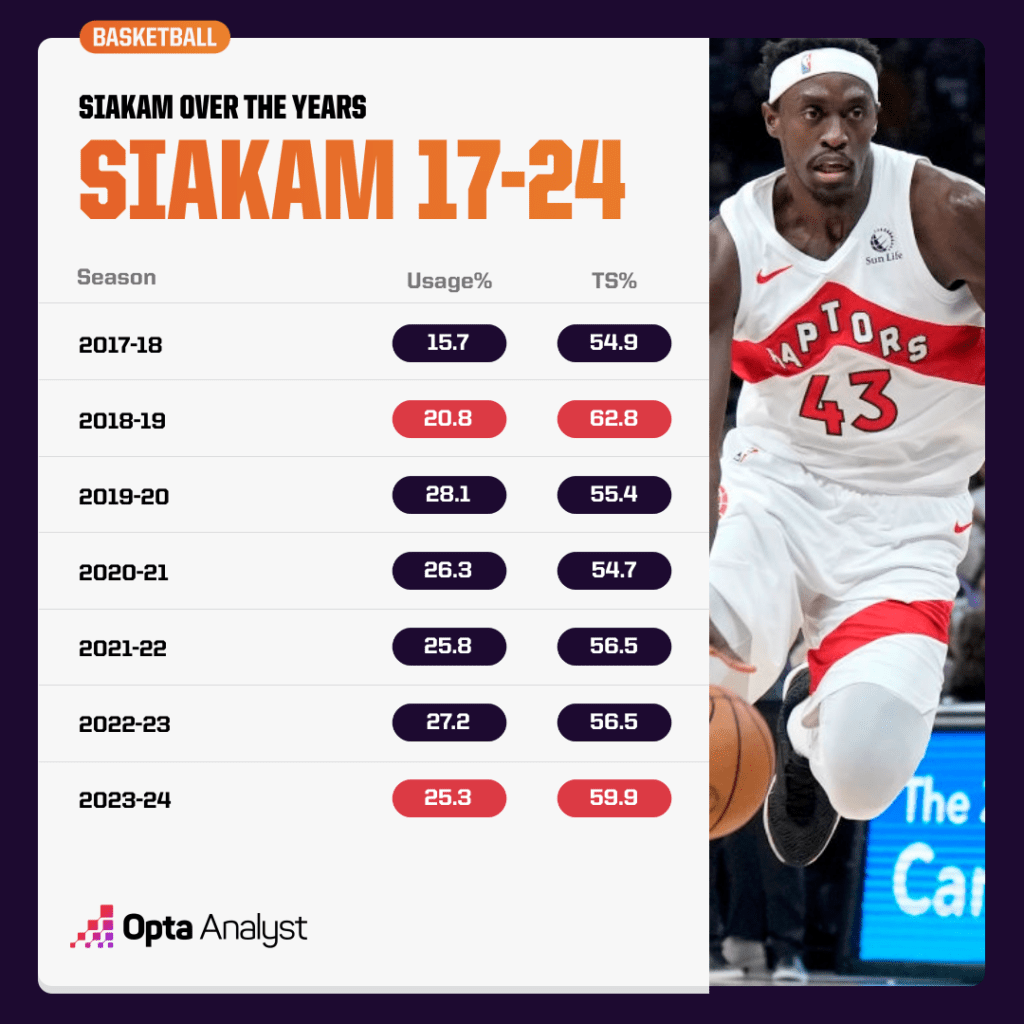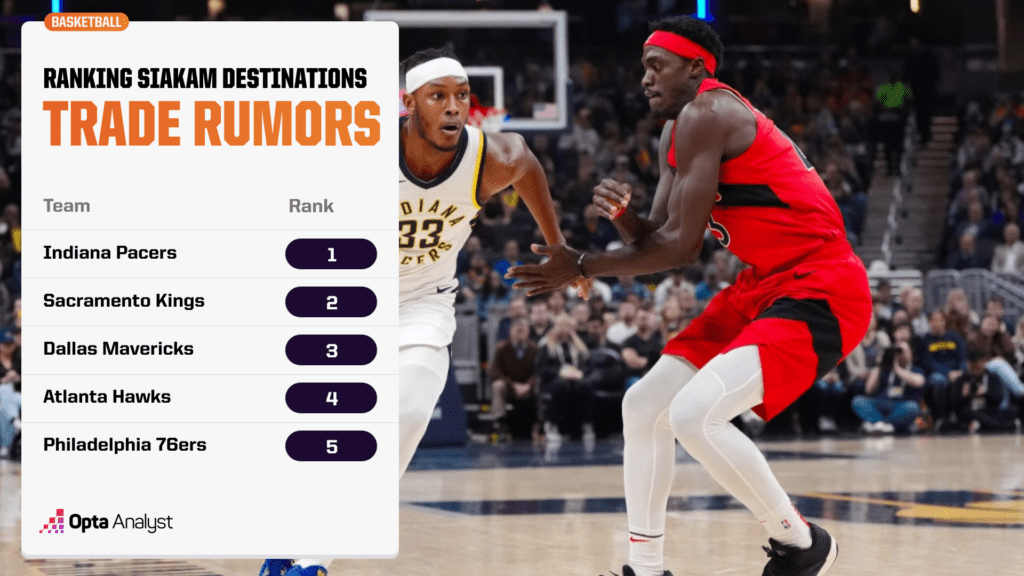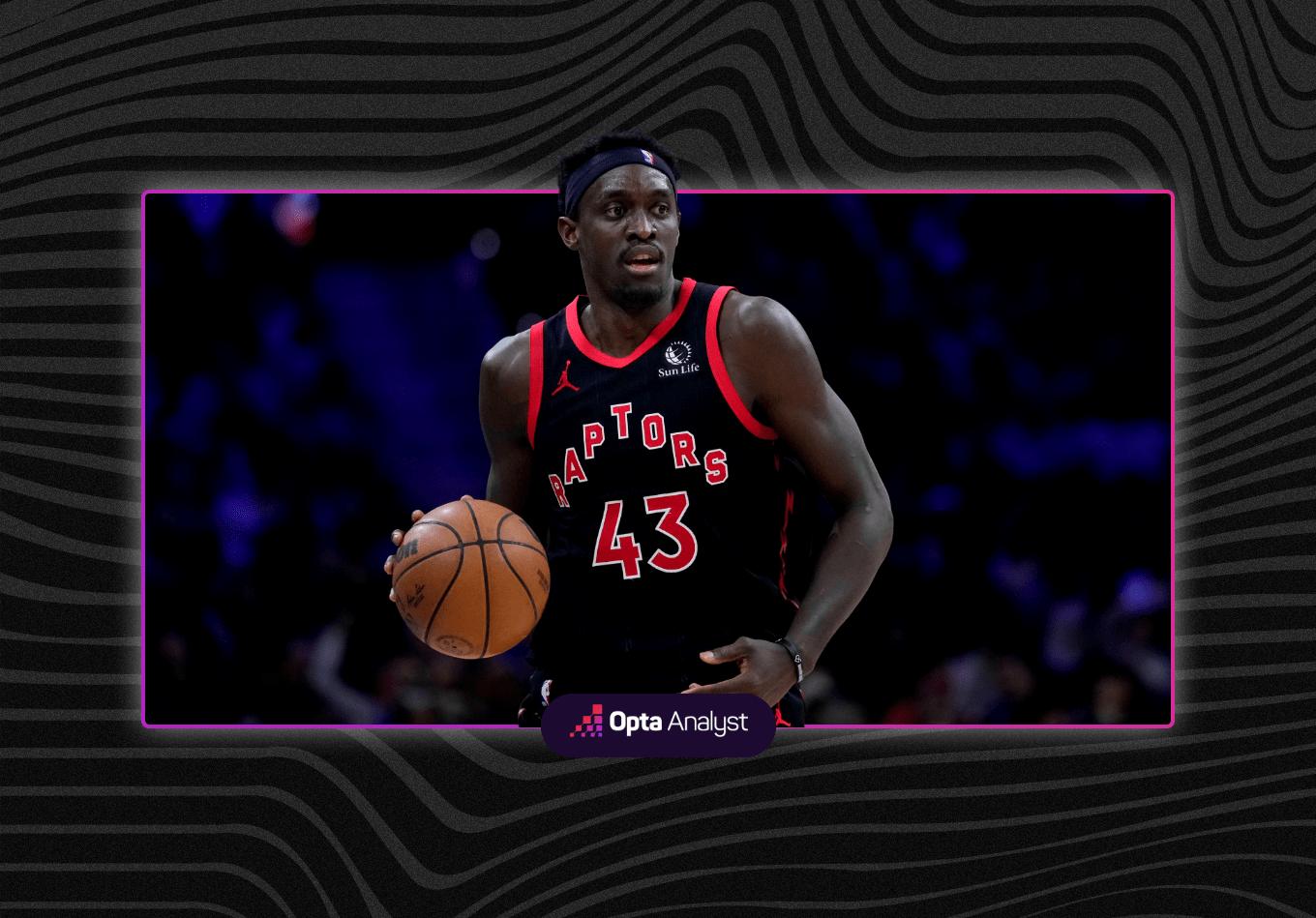Despite already making one huge deal with the New York Knicks centered around OG Anunoby, Immanuel Quickley and RJ Barrett, the Toronto Raptors may not be done making major trades.
There have been a lot of trade rumors surrounding forward Pascal Siakam. And to his credit (unlike Zach LaVine), many teams appear to be hot on Siakam’s trial.
Raptors team president Masai Ujiri even hinted on a call welcoming Quickley on a recent episode of Toronto’s Open Gym” series that the club is moving in a new direction.
But what makes Siakam so good? What does he bring to a potential suitor ahead of February’s trade deadline?
And which teams would make the best new home for the two-time All-Star?
A Strange Career Arc
Siakam made his bones in the NBA by being the ceiling-raising role player that every title-contending team craves. The 2016 late first-round pick could defend multiple positions, use his length to create turnovers, run in transition, cut, and make great connective-tissue assists.
At the very least, Siakam was the third-best player on the 2018-19 Raptors team that took home the title (some may argue he was even the second).
However, the departures of Kawhi Leonard and later Kyle Lowry (and even later than that, Fred VanVleet) forced Siakam to enhance his self-generated scoring game in order to help keep his team competitive. The quintessential ceiling-raiser needed to add floor-raising qualities.
Siakam’s style never revolved around spamming pick-and-rolls and pull-up triples (like Tyrese Maxey). Instead, he perfected his footwork to become one of the league’s best volume drivers, isolationists, and post-up players.
His mastery of these areas gives his offensive game a Dirk Nowitzki quality.
Unfortunately, he’s only a diet version of Nowitzki on offense. You see, while Siakam has come a long way as an independent scorer, he’s still not good enough to operate as a high-level offense’s No. 1 option (something Toronto has often asked him to do).
This conundrum is better understood when you look at the changes in his usage rate and true shooting over the years.

When Leonard left in 2019, Siakam’s usage escalated, but his true shooting took a hit. That pattern is a telltale sign that a player isn’t really suited to handle a ton of primacy in an elite offense.
There is a silver lining to all this. Actually, there are two. First, notice how Siakam’s true shooting has improved this year as his usage has decreased.
That is a byproduct of the team turning over the keys to the offense to Scottie Barnes. And it indicates to us that Siakam is still capable of being an efficient scorer when you lessen his offensive burden (which is, ideally, what would happen if he was traded).
The second bright side here is that Siakam now has a strong midrange game (79th percentile in efficiency on 91st percentile volume) to complement his secondary offensive skills. So, in a sense, his trials and tribulations as an offensive focal point have made him even better at the role he played for Toronto in 2018-19.
What He Can Bring To A Contender
Siakam, who is averaging 22.2 points and 6.4 rebounds, still has all the offensive skills that made him a great secondary/tertiary piece back in the day. And now, he also has his Nowitzki lite mid-post game he can lean on when his team needs it.
In theory, he should be the ultimate version of the 3-and-D archetype. A player who can play off-the-ball, defend, and provide on-ball creation when need be, right?
Eh, not necessarily.
There are a couple of question marks with this hypothesis. First, and this isn’t really a point of contention, Siakam isn’t much of a perimeter spacer. Over the years, Siakam has consistently been below league average in wide-open 3-point percentage (a strong context-independent indicator of a player’s shooting prowess).
Second, as is usually the case with great defenders who get older and take on larger offensive roles, Siakam’s defense has fallen off significantly since his early years with the Raptors. As it stands, Siakam is just in the 52nd percentile (with a minus-0.6) defensive DRIP (minimum 200 minutes played).
That’s a far cry from the second team All-NBA and near All-Defensive Team levels he was at back in the day.
Will Siakam’s defense pick back up with less pressure on him on offense? That could happen. Recently, we saw Russell Westbrook (a venerable guard stopper in college) reclaim his defensive roots this past year after having his offensive role diminished significantly.
Grant Hill is another great example of this. Maybe we see the same thing take place with Siakam.
Finding the Perfect Home
On offense, Siakam slots in as a strong second option. He’s a strong two-level scorer (at the rim and from the midrange) with underrated playmaking abilities (different topic for a different day). We also know that he won’t offer much by way of outside shooting.
On defense, there is a lot more unknown.
Can he be a strong defense’s best or second-best defender when he’s fully focused on that end of the court? That remains to be seen. But what we do know is that his 7-foot-3 wingspan gives his potential new team a ton of length and size. This will undoubtedly be useful for defending larger wings/forwards, creating turnovers, and protecting the paint from the low man position.
Siakam’s versatility allows him to fit on most competitive teams. But the optimal destination for one of the league’s top trade targets would be a team that needs size and tough shot-making and already has spacing and strong on-ball creation.
Based on those parameters, the best teams would be the Indiana Pacers, Sacramento Kings and Dallas Mavericks. Other teams that probably should be involved in trade talks, but the fit wouldn’t be as clean include the Atlanta Hawks, Philadelphia 76ers and Golden State Warriors.

The worry with the Hawks and the Warriors is that they don’t have enough spacing. Meanwhile, on the 76ers, Joel Embiid and Siakam’s shared affinity for the mid-post may become redundant.
And as much as Maxey has improved, there are still questions about whether or not he can be a primary ball handler on a high-level playoff team.
Check out our MLB and NBA coverage, and our NFL picks and college basketball predictions. Follow us on X and Instagram for more!
